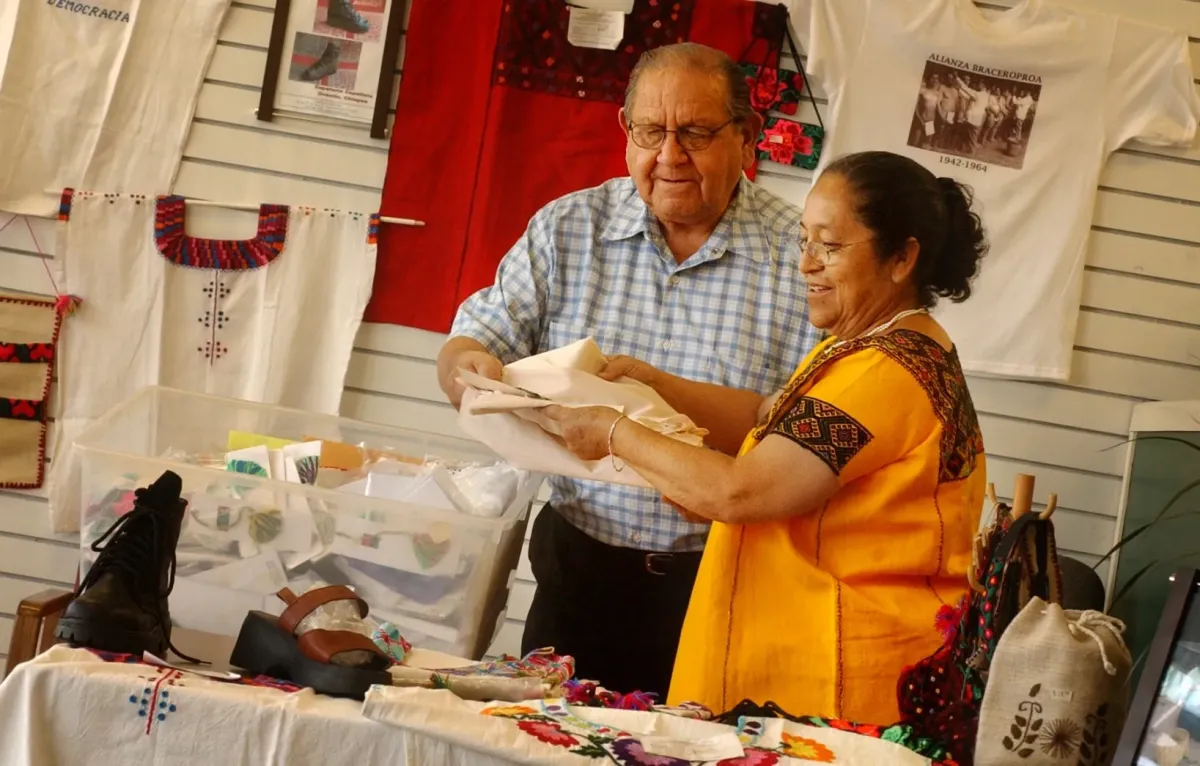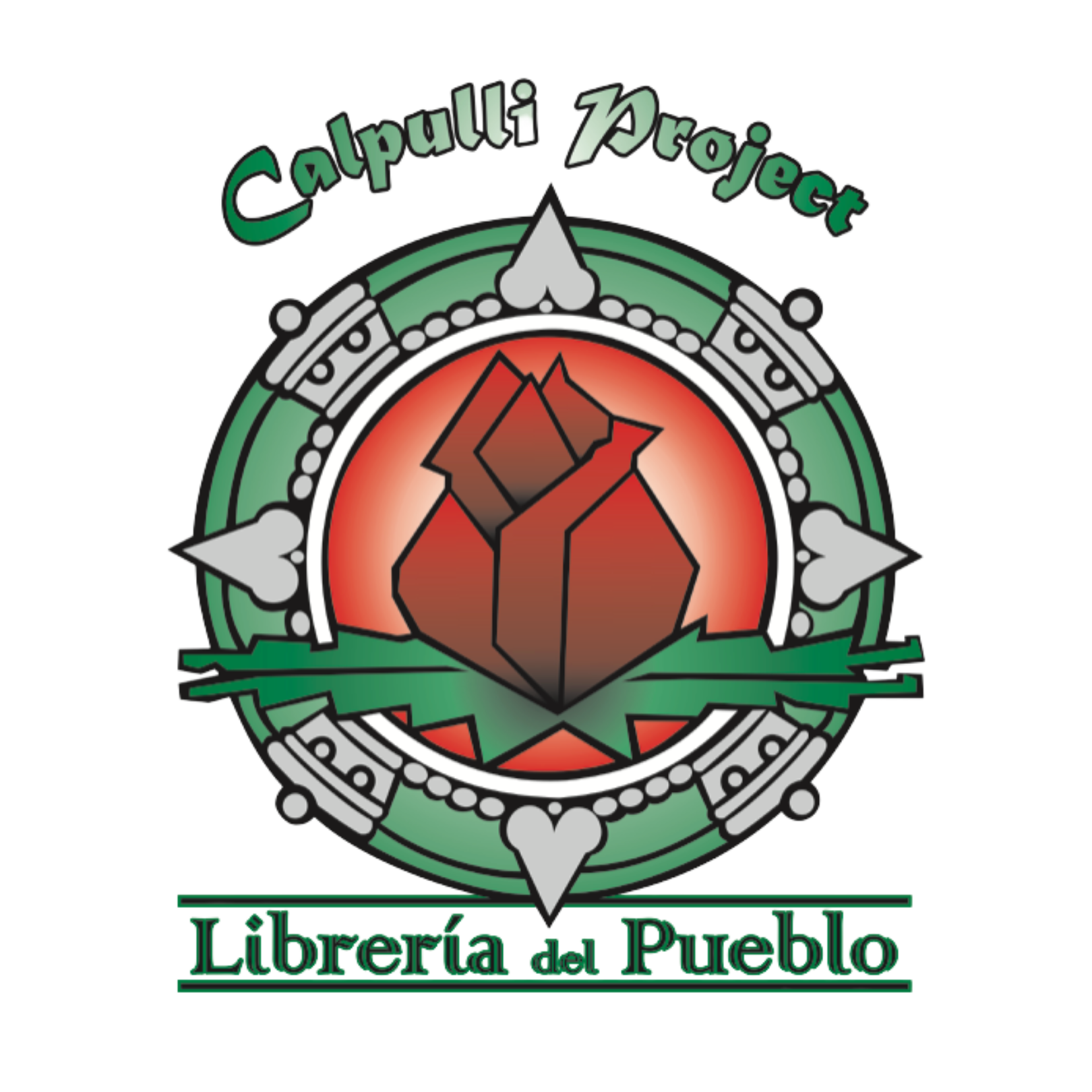Our Story

Our pilgrimage as a migrant People to the north of the Abya Yala continent, in the territory of Aztlán, has been going on for centuries before the United States of America invaded our space. We are descendants of the original Peoples of Mexico. In the last fifteen years, people from El Salvador, Nicaragua and Guatemala have joined our pilgrimage.
The Mexican Chicano People, which is rooted in *Aztlán; it has a long history of resistance and progress to maintain its identity, its rights and its social, political, economic and cultural project. We understand ourselves as members of the continental People. We fight to establish the bases for self-determination, self-management and self-sufficiency of our social project.
For the members of the El Calpulli Project, the ancestral pilgrimage continues until today. We have never stopped traveling through our land. Even with the border imposed by the United States and its unfair and racist immigration laws, we continue to make pilgrimages, that is, we continue to search for a place to live with dignity. Pressured to migrate and leave our home towns for reasons of poverty, politics, among others, we come to this country excited to change that reality caused by the capitalist system and now its neoliberal project. However, when we arrived in this country we found the same reality camouflaged in white, blue and red.
The spirit of struggle and dignity forces us to seek alternatives to change the reality of poverty, exploitation, racism and social marginalization that we find on this side of the unjust North American wall. Here, in our neighborhoods, infant mortality, unemployment, dependency, the great labor slavery, the exploitation of our workforce, the flight of brains of our communities, the migratory persecution, is lived and carried as a stigma that places us in a situation of marginalization, slavery and death.
In 1970, Rosa Martha Zárate organized the first youth group in San Ysidro, CA. As Chicano/as Catholics, we joined popular struggles nationally and internationally to claim our place, rights and services in the Catholic Church in the US. We participated in the peasant struggle headed by Cesar Chávez and Dolores Huerta; We support the struggle of El Salvador, Nicaragua and Chiapas, as well as the struggles of our own migrant community.
In 1973, Rosa Martha is hired as the first director of the office of religious education for the diocese of San Diego, CA. The economic project of the Librería del Pueblo cooperative begins for the accompaniment, organization and development of young people from the youth group and adults committed to the struggles of the People. This started with the sale of 10 bibles and the recording of his first album Pueblo en Marcha, with the support of “Chico” Ramón Ortiz, from +P. Frank Ponce, the patronage of +Bishop Gilberto Chávez and the Guadalupana Society of San Diego, CA. Our Bookstore supplied religious and educational material and songs to the Catholic groups that were organizing nationally. Our youth group project was part of the team that managed to establish the Catholic Youth Ministry in the US.
1985 is a key year in our pilgrimage. The project started in It was incorporated as Librería del Pueblo, Inc. (LDP), Father Patricio Guillén, Juan Reza, Gloria Zometa, Miguel Chávez. Rosa Rivera and Rosa Martha Zárate, we came together as a team to start our organizational project to support the undocumented population affected at that time by the immigration reform identified as "Amnesty." The services focused on supporting the community in the preparation of their documents, in English classes and in the requirements demanded by this unjust law. The bookstore of religious articles is opened, the only source of income. Guillermina Alonso and members of the communities organized since 1973 continued to support the LDP cooperative.
1997. Librería del Pueblo had managed to organize a very large community base. Here begins a process of popular consultation to elaborate the Action Plan, of the Calpulli Project, Librería del Pueblo.
2000 The development of the El Calpulli Project has been taking place year after year. The number of programs for migratory aid, education, health, alternative economy, popular organization, defense of human and civil rights, programs of solidarity with Chiapas and other causes of the migrant People, such as with Peoples in situation of natural disasters and communities affected by the political and economic wars of neoliberal imperialism.
2001-2004 The El Calpulli project advances like a tributary river that joins the great continental river that seeks alternative outlets to its route and liberating historical walk. From this time begins a very important phase in our pilgrimage. We have proposed to establish the network of community projects (Calpulleques), components of the El Calpulli Project. Our long-term goal (2010) is to establish the "Calpulli Village" as a space that identifies us and as the operations center for community projects.
Since 2001, our work and popular accompaniment is aimed at organizing the infrastructure of three to five neighborhoods in San Bernardino, as a basis for development.
integral part of the Pueblo organized project for a healthy and dignified life.
